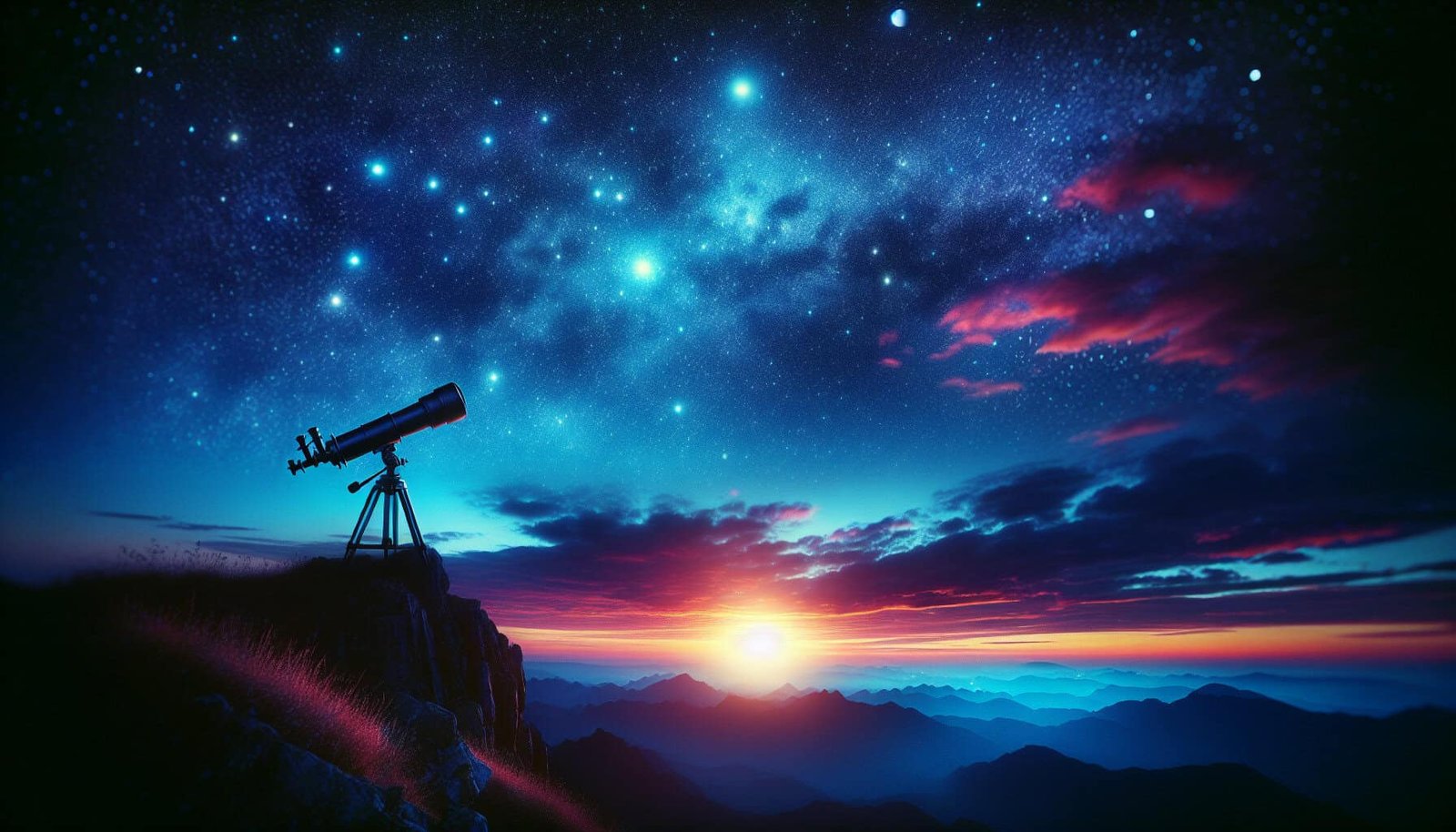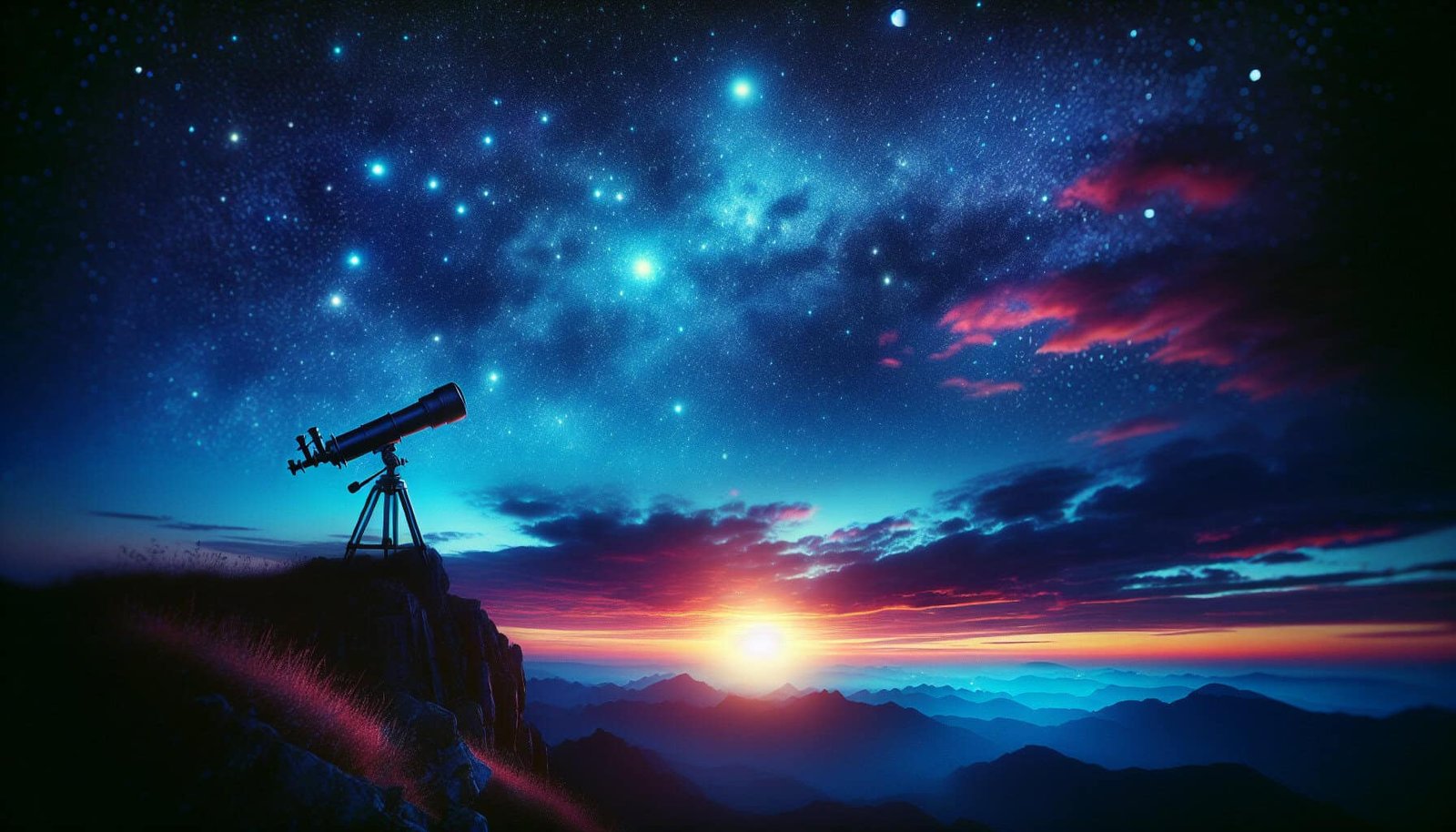Imagine gazing up at a vast expanse of twinkling stars, feeling a sense of wonder and awe as you witness celestial phenomena unfold before your eyes. It’s a thrilling experience that connects you to the mysteries of the universe. But have you ever wondered if there are any secret spots, hidden gems where you can truly immerse yourself in the beauty of stargazing? Somewhere away from the bright city lights and the distractions of everyday life? Well, prepare to be delighted, because we’re about to unveil some of the best-kept secrets for stargazing and observing celestial phenomena. Get ready to embark on a magical journey through the cosmos, where the stars will be your guiding light.

1. National Parks
1.1 Yosemite National Park
Yosemite National Park is renowned for its breathtaking natural beauty and is a fantastic destination for stargazing. With its dark skies and minimal light pollution, Yosemite offers incredible opportunities to observe celestial phenomena. The park’s vast wilderness and diverse landscapes create a stunning backdrop for stargazing, making it an unforgettable experience for any astronomy enthusiast. Whether you choose to camp out under the stars or take advantage of the park’s designated stargazing areas, Yosemite National Park is a must-visit destination for stargazers.
1.2 Joshua Tree National Park
Located in Southern California, Joshua Tree National Park offers another exceptional stargazing experience. The park’s unique desert landscape, characterized by its iconic Joshua trees, provides an excellent environment for observing celestial wonders. With its remote location and minimal light pollution, Joshua Tree National Park allows for unparalleled views of the night sky. The park even hosts astronomy programs and stargazing events, providing visitors with the opportunity to learn from experts and fully immerse themselves in the wonders of the universe.
1.3 Grand Canyon National Park
While primarily known for its stunning geological features, the Grand Canyon National Park is also a fantastic destination for stargazing. Its vast expanse and remote location away from major urban areas make it an ideal spot for observing celestial phenomena. Visitors to the park can witness the beauty of the canyon illuminated by the moon and gaze at countless stars above. The Grand Canyon also offers ranger-led astronomy programs, where visitors can learn about the night sky while taking in the breathtaking scenery.
2. Remote Locations
2.1 Dark Sky Reserves
Dark Sky Reserves are designated areas that prioritize the preservation of dark skies and promote stargazing. These locations, far away from urban centers and their light pollution, offer some of the best opportunities to observe celestial phenomena. Places like the Cherry Springs State Park in Pennsylvania and the NamibRand Nature Reserve in Namibia have earned international recognition as Dark Sky Reserves. These remote locations provide optimal conditions for stargazing, ensuring an unforgettable experience for any astronomy enthusiast.
2.2 Rural Areas with Low Light Pollution
Apart from dedicated Dark Sky Reserves, there are numerous rural areas around the world with minimal light pollution, offering exceptional stargazing opportunities. Places like the Scottish Highlands and the Australian Outback boast vast stretches of unspoiled landscapes and offer clear skies perfect for observing celestial bodies. These remote areas provide a serene environment that allows for an immersive stargazing experience, away from the hustle and bustle of city life.
2.3 Deserts and Open Fields
Deserts and open fields, with their expansive landscapes and minimal light pollution, provide ideal conditions for stargazing. Locations such as the Sahara Desert in Africa and the Atacama Desert in Chile are known for their dark skies and crystal-clear visibility. These vast and remote areas provide unobstructed views of the night sky, allowing visitors to witness stunning celestial phenomena, including meteor showers and the Milky Way, in all their glory.
3. Mountain Peaks
3.1 Mauna Kea, Hawaii
Reaching heights of over 13,000 feet, Mauna Kea in Hawaii is one of the world’s premier stargazing locations. Its high altitude, combined with its remote location in the middle of the Pacific Ocean, creates an optimal setting for observing the night sky. Mauna Kea also houses several world-class observatories, leveraging the mountain’s unique astronomy conditions. Visitors can join guided stargazing tours or visit the Mauna Kea Visitor Information Station to learn more about the wonders of the universe.
3.2 Mt. Everest, Nepal
While primarily known for its iconic status as the world’s highest mountain, Mt. Everest also offers a remarkable stargazing experience. Its extreme altitude and remote location present stargazers with an unrivaled opportunity to observe celestial phenomena from the “roof of the world.” With its crisp, thin air and clear nights, Mt. Everest provides an extraordinary vantage point to witness the majesty of the night sky like never before.
3.3 Sierra Negra, Galapagos
Located on the volcanic Isabela Island in the Galapagos, Sierra Negra provides a unique stargazing experience in one of the most biodiverse regions on Earth. Stargazers can enjoy clear skies above this remote island, allowing for uninterrupted views of the stars. The absence of light pollution and the natural beauty of the Galapagos make it an incredible destination to combine wildlife exploration with celestial observations. Trekking up to Sierra Negra and witnessing the night sky unfold above the volcanic landscapes is an adventure not to be missed.
4. Observatories and Planetariums
4.1 Griffith Observatory, Los Angeles
Perched on the southern slope of Mount Hollywood in Los Angeles, Griffith Observatory offers both breathtaking views of the city and access to the wonders of the universe. This iconic observatory hosts captivating exhibits and features multiple telescopes that visitors can use to observe celestial objects. Whether you participate in the public star parties or attend one of their informative presentations, the Griffith Observatory provides a unique opportunity to explore the night sky within a bustling urban center.
4.2 Hayden Planetarium, New York
Located within the American Museum of Natural History, the Hayden Planetarium in New York City offers a magnificent blend of education and awe-inspiring celestial experiences. This renowned planetarium uses state-of-the-art technology to simulate the night sky, allowing visitors to journey through space and explore distant galaxies. With its immersive shows and educational programs, the Hayden Planetarium provides a captivating experience for stargazers of all ages.
4.3 Lick Observatory, California
Situated atop Mount Hamilton in California, the Lick Observatory is a historic research facility that welcomes visitors eager to explore the wonders of the night sky. The observatory houses several telescopes used for astronomical research, and visitors can take part in public programs and stargazing events. With its panoramic views and knowledgeable staff, the Lick Observatory offers a unique opportunity to delve into the realm of astronomy and witness celestial marvels.

5. Rooftop Observatories
5.1 Top of the Rock, New York City
The Top of the Rock observation deck, located at Rockefeller Center in New York City, offers more than just stunning views of the cityscape. At night, visitors can enjoy an unobstructed view of the starry sky from this elevated vantage point. Away from the city’s bright lights, the Top of the Rock provides a rare chance to experience stargazing in the heart of a bustling metropolis, making it a perfect spot for both locals and tourists to enjoy the wonders of the night sky.
5.2 Elizabeth Tower, London
Not only known for its iconic Big Ben clock, the Elizabeth Tower in London provides a unique opportunity for rooftop stargazing. From this historic landmark, visitors can marvel at the London skyline while also immersing themselves in the celestial beauty above. Gazing up at the stars from the Elizabeth Tower is a magical experience that offers a different perspective of the city, blending rich history with the timeless wonders of the universe.
5.3 Clingmans Dome, Tennessee
Clingmans Dome, the highest point in the Great Smoky Mountains National Park, offers an elevated perch for stargazers. Its observation tower provides panoramic views of the surrounding mountains, and its remote location away from major cities ensures minimal light pollution. From Clingmans Dome, visitors can witness stunning nightscapes and observe celestial phenomena, such as meteor showers and the glowing band of the Milky Way.
6. Cruise Ships and Remote Islands
6.1 Antarctica Cruises
Embarking on a cruise to Antarctica offers a rare opportunity to explore one of the most remote and pristine locations on Earth. With its vast icy landscapes and limited human presence, Antarctica provides unparalleled conditions for stargazing. Away from the lights of civilization, visitors can experience the solitude and darkness that allow for breathtaking views of the night sky. Cruises to Antarctica often feature onboard astronomers who share their knowledge and guide passengers through the wonders of the southern skies.
6.2 Alaskan Cruise
Alaska’s stunning wilderness and vast open spaces make it a fantastic destination for stargazing, especially through an Alaskan cruise. As you sail along the rugged coastline and traverse icy fjords, clear nights offer an incredible opportunity to witness the beauty of the northern lights and observe celestial wonders. Whether you opt for a cruise with dedicated stargazing programs or simply gaze up from the ship’s deck, an Alaskan cruise promises unforgettable nights under the stars.
6.3 Canary Islands, Spain
The Canary Islands, situated off the western coast of Africa, are famous for their exceptional stargazing conditions. The islands are home to several high-quality observatories, taking advantage of their favorable location away from light pollution and their optimal weather conditions. Visitors can join guided stargazing tours or visit popular spots like the Roque de los Muchachos Observatory on La Palma Island to explore the Canary Islands’ rich astronomic heritage.

7. Amateur Astronomer Groups
7.1 Astronomical Societies and Clubs
Joining an astronomical society or club can connect you with like-minded individuals who share your passion for stargazing and celestial phenomena. These groups often organize regular meetings, educational events, and star parties, where members can come together to observe the night sky and learn from experienced astronomers. By joining an astronomical society or club, you can gain valuable insights, expand your knowledge, and participate in stargazing activities with fellow enthusiasts who share your excitement.
7.2 Star Parties and Festivals
Star parties and festivals are recurring events that bring together astronomers and stargazing enthusiasts from various backgrounds. These gatherings often take place in remote locations with minimal light pollution, allowing participants to indulge in uninterrupted stargazing. Whether you choose to attend renowned events like the Texas Star Party or smaller local gatherings, star parties and festivals create a social and educational atmosphere that fosters a sense of community among stargazers.
7.3 Stargazing Tours and Workshops
Stargazing tours and workshops offer unique opportunities to learn from expert astronomers while exploring some of the best stargazing destinations around the world. These guided experiences provide an immersive journey into the cosmos, combining educational sessions with practical observations. Whether you’re a beginner or an experienced enthusiast, stargazing tours and workshops allow you to delve deeper into the secrets of the universe while connecting with fellow stargazers in a supportive and enriching environment.
8. Historical and Cultural Sites
8.1 Stonehenge, England
Stonehenge, one of the most famous prehistoric monuments in the world, not only offers a glimpse into ancient history but also provides an awe-inspiring stargazing experience. Believed to have been constructed with astronomical alignments in mind, Stonehenge offers a unique opportunity to witness the interplay between celestial bodies and human ingenuity. Visitors can attend special sunrise or sunset events, where modern-day druids and astronomers provide insights into the astronomical significance of this iconic site.
8.2 Machu Picchu, Peru
Nestled high in the Andes Mountains, Machu Picchu fascinates visitors with its mystical beauty and cultural significance. Apart from its archaeological wonders, Machu Picchu also offers stunning stargazing opportunities. With its elevation and remote location, visitors can marvel at the Andean skies and witness the Milky Way stretching across the night sky. Exploring the ruins and contemplating the celestial wonders at Machu Picchu creates a truly transcendent experience.
8.3 Pyramids of Giza, Egypt
The Pyramids of Giza, marvels of ancient engineering, have captivated human imagination for centuries and continue to enthrall visitors today. These magnificent structures also provide a unique backdrop for stargazing. As the night falls, visitors can witness the stars illuminating the skies above the pyramids, connecting the ancient wonders of Egypt with the eternal mysteries of the cosmos. Gazing up at the stars while surrounded by the remnants of an ancient civilization creates a sense of awe and wonder.

9. Urban Areas with Low Light Pollution
9.1 Central Park, New York City
Despite being situated in the heart of a bustling metropolis, Central Park in New York City offers surprisingly good stargazing conditions. Thanks to careful lighting regulations and its vast size, Central Park provides urban stargazers with a tranquil oasis away from the city lights. Late-night walks through the park can provide glimpses of stars, planets, and even the moon, making it a popular spot for stargazing enthusiasts looking to immerse themselves in the celestial wonders amidst the urban landscape.
9.2 Hampstead Heath, London
Hampstead Heath, a vast green space in London, allows visitors to escape the city’s bright lights and experience stargazing in a serene environment. With its elevated position and large open areas, Hampstead Heath offers unobstructed views of the night sky. Picnic on the heath, lay back on a blanket, and gaze up at the stars while enjoying a tranquil moment amidst the bustling capital city. Hampstead Heath provides a unique haven for stargazers in the heart of London.
9.3 High Line, New York City
The High Line, an elevated park built on a historic freight rail line, presents a surprising venue for stargazing in New York City. This linear green oasis offers an escape from the city’s hustle and bustle, and its relatively low light pollution makes it a viable location for observing celestial objects. Whether you visit during the day to enjoy the park’s unique features or choose to linger until after dark to witness the stars above, the High Line provides a tranquil urban setting for stargazers.
10. Private Observatories and Remote Telescopes
10.1 Chabot Space and Science Center, California
The Chabot Space and Science Center in California offers a blend of public education and enthusiast-focused opportunities. Apart from its engaging exhibits and planetarium shows, the center provides access to multiple telescopes, making it an excellent destination for stargazers looking to explore the night sky further. Visitors can participate in public observing nights, where they can marvel at distant galaxies and celestial wonders under the guidance of knowledgeable staff and volunteers.
10.2 Slooh Observatory
Slooh Observatory provides a unique online platform that allows users to control telescopes remotely and explore the universe from the comfort of their own homes. This innovative approach opens up a world of possibilities for stargazers who may not have access to their own telescopes or live in areas with poor stargazing conditions. With a Slooh membership, you can schedule observation sessions, participate in live broadcasts, and even collaborate with fellow astronomers on real-time celestial projects.
10.3 iTelescope Network
The iTelescope Network offers a global network of remotely controlled telescopes for both amateur and professional astronomers. With observatories scattered across various continents, iTelescope allows users to access high-quality telescopes and capture stunning images of the night sky from virtually anywhere in the world. Whether you’re an experienced astrophotographer or a curious stargazer, the iTelescope Network offers an exciting opportunity to delve into the wonders of the universe using state-of-the-art equipment.
In conclusion, whether you prefer to venture into national parks or explore remote islands, there are numerous secret spots around the world that provide exceptional opportunities for stargazing and observing celestial phenomena. From the natural beauty of Yosemite National Park to the heights of mountain peaks like Mauna Kea, these locations offer stunning vistas that enhance the stargazing experience. Observatories, planetariums, and rooftop locations in urban areas grant access to the wonders of the night sky even in bustling cities. And if you’re seeking to connect with like-minded individuals, join amateur astronomer groups, participate in star parties, or book stargazing tours and workshops. Whether you’re a seasoned astronomer or a beginner eager to explore the universe, there is a secret spot out there waiting for you, inviting you to look up, embrace the night sky, and marvel at the celestial wonders that have captivated humanity for centuries. So pack your stargazing gear, prepare for wonder, and embark on an extraordinary journey to these hidden gems of the night sky.

